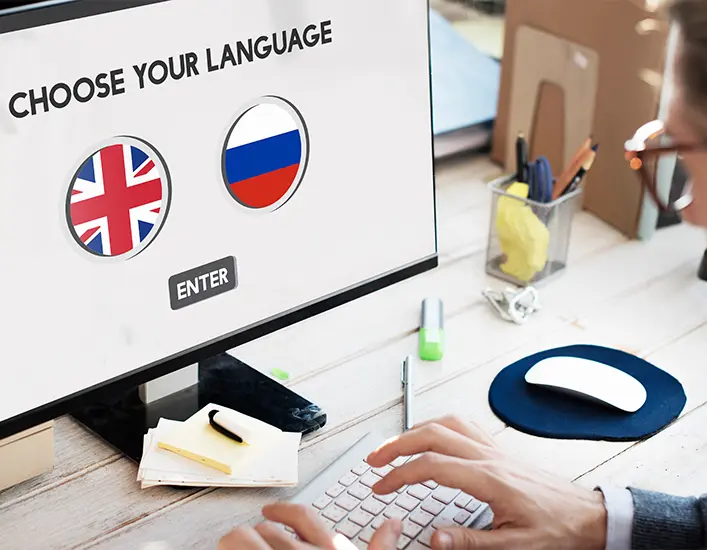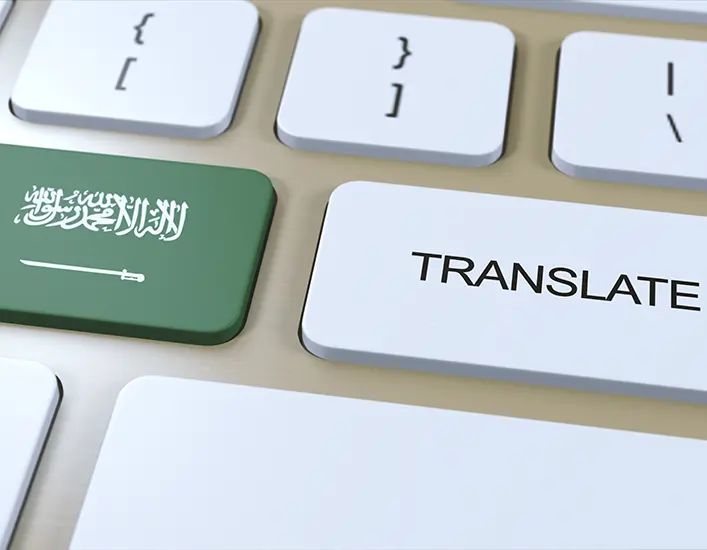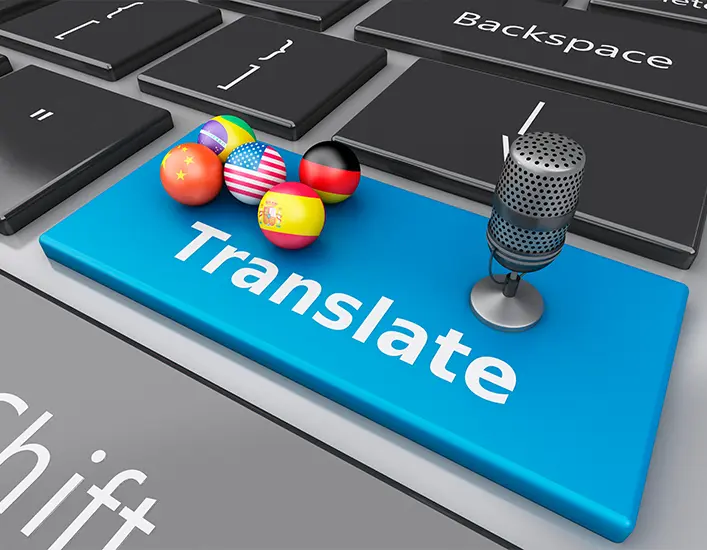
Efficient Website Translations: Best Practices & Strategies
- Developer
- February 28, 2025
- E-commerce Website Content Creation
- 0 Comments
Expanding globally requires more than just translating words—it demands strategic website translation that enhances user experience, ensures cultural relevance, and optimizes for SEO. Without an efficient translation approach, businesses risk miscommunication, poor engagement, and lost conversions.
So, how do you translate a website efficiently while maintaining accuracy and search visibility? This guide explores best practices, top tools, and cost-effective strategies to help you succeed in website localization.
Think of your website as your digital storefront. If you only display your goods in one language, you’re essentially putting up a sign that says, “Only locals welcome.” But what if you could invite everyone in—no matter where they’re from or what language they speak? Translating your website is the key to doing just that, and it’s more accessible than you might think.
Let’s dive into why website translation isn’t just a nice-to-have but a must-have for businesses looking to grow globally. Spoiler: it’s about much more than just changing words.
Key Takeaways
- Differences between website translation and localization
- Best practices for SEO-friendly multilingual websites
- Top tools for efficient website translation
- Cost-effective solutions for global website optimization
- Actionable steps to enhance user experience with translation
Table of Contents
- What is Website Translation?
- How Website Translation Works
- Benefits of Efficient Website Translations
- SEO-Friendly Website Translation Strategies
- Top Tools for Efficient Website Translations
- Cost-Effective Website Translation Solutions
- Improving User Experience with Website Translation
- Conclusion
- FAQs
What is Website Translation?
Website translation is the process of converting website content from one language to another while preserving clarity, intent, and search visibility.
Translation vs. Localization
- Translation: Converts text from one language to another while maintaining meaning.
- Localization: Adapts content to cultural nuances, design, and regional preferences for a better user experience.
For example, an e-commerce site translated from English to Arabic may require right-to-left formatting and adjustments in currency and cultural references to resonate with Arabic-speaking users. Learn more about translation services and why they matter.


How Website Translation Works
Human vs. Automated Translation
- Human Translation: Ensures accuracy and cultural relevance but is time-intensive.
- Automated Translation: Uses AI-driven tools for speed but requires human review for accuracy.
- Hybrid Approach: Combines machine translation with human editing for a balance between efficiency and quality.
Steps to Translate a Website Efficiently
- Identify target languages based on business goals.
- Translate and localize content while preserving intent.
- Optimize for multilingual SEO with hreflang tags.
- Use a translation management system (TMS) for consistency.
- Conduct usability testing to refine translations.
Benefits of Efficient Website Translations
- Expands Global Reach: A well-translated website allows businesses to connect with diverse audiences worldwide. By speaking the native language of potential customers, businesses can break language barriers, foster trust, and increase engagement. Localized content makes it easier for users to navigate the site, understand services, and make purchasing decisions, ultimately leading to higher global market penetration.
- SEO Optimization: Localized keywords and multilingual SEO strategies significantly improve search rankings in international markets. Implementing hreflang tags, optimizing metadata, and ensuring translated content aligns with regional search intent help websites appear in localized search results. A properly optimized multilingual website not only increases visibility but also drives organic traffic from multiple geographic locations.
- Higher Conversions: Consumers are more likely to purchase from a website presented in their native language. Studies show that users trust brands that communicate in their language and provide localized experiences. Efficient website translation helps in reducing bounce rates, improving time spent on the website, and increasing conversion rates, leading to higher revenue for businesses targeting international customers.
- Competitive Advantage: A professionally translated website gives businesses a significant edge over competitors that rely on generic or automated translations. High-quality translation and localization showcase attention to detail, professionalism, and dedication to customer experience. In competitive industries, multilingual websites can set brands apart, making them the preferred choice in diverse markets.
- Enhanced User Experience: Engaging, context-aware content improves user retention by making interactions seamless and intuitive. Localization extends beyond translation; it includes adapting imagery, cultural references, and even website design to suit the preferences of different audiences. Businesses that prioritize user experience through accurate website localization enhance customer satisfaction and brand loyalty, leading to repeat business and positive word-of-mouth marketing.
For more insights on why translation is essential for businesses, read why translators are essential for your business.
SEO-Friendly Website Translation Strategies
Hreflang Tags for Search Engines
Hreflang tags signal to Google which language versions of a page to serve users, preventing duplicate content issues.
Optimizing Local Keywords
- Conduct keyword research for each target language.
- Adapt keywords to match regional search intent.
- Translate metadata and URLs for better visibility.
URL Structures for Multilingual SEO
- example.com/fr/ (Subfolder) – Preferred
- fr.example.com/ (Subdomain) – Acceptable
- example.com?lang=fr (Query String) – Avoid
Learn more about SEO copywriting for multilingual websites.
Top Tools for Efficient Website Translations
- Google Translate – AI-powered instant translation
- DeepL – Advanced machine translation
- Smartling – Enterprise-level translation management
- Weglot – Fast multilingual website integration
- Transifex – Cloud-based localization platform
How AI is Transforming Website Translation
Neural machine translation has improved automated translations, making AI-powered tools faster and more accurate. However, human validation remains essential for cultural and brand consistency.
Cost-Effective Website Translation Solutions
Prioritizing High-Value Content
Start with high-traffic pages, product descriptions, and landing pages before translating all content. Prioritizing e-commerce translations? Check out e-commerce content services.
Using AI with Human Review
AI-driven translation can reduce costs while human editors refine for clarity and accuracy.
Leveraging Translation Memory (TM)
Translation memory saves translated content for future use, reducing repetitive work and costs.
Crowdsourced Translations
Some companies use community-based translations to cut costs while engaging native speakers.
Improving User Experience with Website Translation
Easy Language Switching
Ensure users can seamlessly switch languages with a visible, accessible selector.
UX Considerations for Localization
- Adapt design for right-to-left languages (Arabic, Hebrew).
- Modify number and date formats for regional norms.
- Use culturally relevant imagery and messaging.
Testing and Refining
Conduct A/B testing and collect user feedback to improve the translation’s effectiveness.
For insights into translation trends in the UAE, visit translation services in Dubai.
Conclusion
An efficiently translated website is a powerful tool for global expansion. By implementing SEO-friendly translation strategies, leveraging AI tools, and optimizing user experience, businesses can engage international audiences effectively and drive higher conversions.
Action Steps
- Implement hreflang tags for SEO optimization.
- Use a translation management system (TMS) for consistency.
- Test usability and refine translations based on analytics.
Explore more about translation services in Dubai.
FAQs
01 What is the best way to translate a website?
A hybrid approach using AI-powered translation with human review ensures efficiency and accuracy.
02 How do I optimize a translated website for SEO?
Use localized keywords, implement hreflang tags, and ensure metadata is properly translated.
03 Are automated translations accurate?
AI-driven tools have improved, but human editing is still necessary for quality control.
04 How can I reduce website translation costs?
Prioritize high-traffic pages, use AI translation with human review, and leverage translation memory.
05 How do I measure translation success?
Monitor traffic, engagement, conversions, and user feedback from different language versions.
Wrapping It Up
Translating your website is one of the smartest moves you can make to grow your business globally. It’s not just about words—it’s about connection. By making your content accessible and culturally relevant, you’re building bridges that lead to trust, engagement, and growth.
The best part? You don’t have to do it alone. Alef Creates is here to help you every step of the way. Ready to reach new heights? Let’s start translating.






